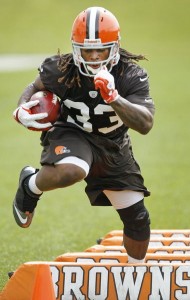At MIT Sloan Sports Analytics Conference in March, unilateral fear existed inside analytics community that systemic ineptitude of Browns franchise will be too substantial for even DePodesta to repair. Failure would damage legacy of beloved industry pioneer and set field of sports data science back decades. “If you love analytics and want it to grow and succeed in the NFL, then you know Cleveland is a nightmare scenario,” states NFL executive with 20 years of experience in analytics. “Cleveland is a crazy, terrible place for this to be tested in football.”
The idea that Cleveland is too toxic to be resurrected is…. well, it’s more supported by the data than you might think. Certainly DePodesta could turn things around, but if he doesn’t, he’ll just be the next man in a long line of failed Browns executives. You won’t be surprised to learn that Cleveland has the worst winning percentage in the NFL since re-entering the league in 1999. But even accounting for the fact that the Browns have been bad, Cleveland has still underperformed to the tune of about 26 wins over the last 16 years, most in the NFL.
How did I arrive at that number?
- First, I calculated each team’s Pythagnpat winning percentage in each season beginning in the year 1999, which is based solely on the number of points scored and allowed by each team. For example, in 2014, the Browns scored 299 points and allowed 337, which translates to a 0.429 Pythagenpat winning percentage (the Browns actually beat that slightly, by going 7-9).
- Next, I ran a regression on the years 1999 to 2014, using Year N Pythagenpart winning percentage to predict Year N+1 wins. This would, in theory, help out the Browns, because Cleveland would be expected to win fewer games than the average team in Year N+1 because the Browns typically have a poor Year N performance. The best-fit formula was 0.311 + 0.376 * Yr_N_Pyth_Win%. This shows that regression to the mean is a large factor, because past performance only accounts for 38% of what goes into a team’s projection for Year N+1; the remainder is a constant for all teams.
Using Cleveland’s 2014 line as an example, the 2015 Browns would have been expected to win 7.6 games, because the 2014 team had 6.9 Pythagenpat wins, and regression to the mean drives that number towards 8 wins. But Cleveland won just 3 games last year, falling 4.6 wins shy of expectation. And that’s only the second-most disappointing season of the new Browns era: in ’08, Cleveland fell 4.7 wins shy of its Pythagenpat prediction. Take a look at every Cleveland season from 2000 to 2015 (obviously there was no prediction for ’99, since there was no ’98 team):
By falling 26.3 wins shy of expectation, Cleveland has been the most disappointing team in the NFL — even after accounting for regression to the mean — over the last 16 seasons. Take a look:
Regression to the mean is a powerful force. Over the 16 years, over half of the 32 teams fall within 0.6 wins/season of expectation. But the Browns have been remarkably consistent at underachieving, in part because of the franchise’s dreadful record when it comes to drafting quarterbacks. Perhaps most incredible is that Cleveland has fallen short of its Pythagorean expectation 75% of the time. That means, at least so far, even regression to the mean can’t penetrate the Factory of Sadness.

